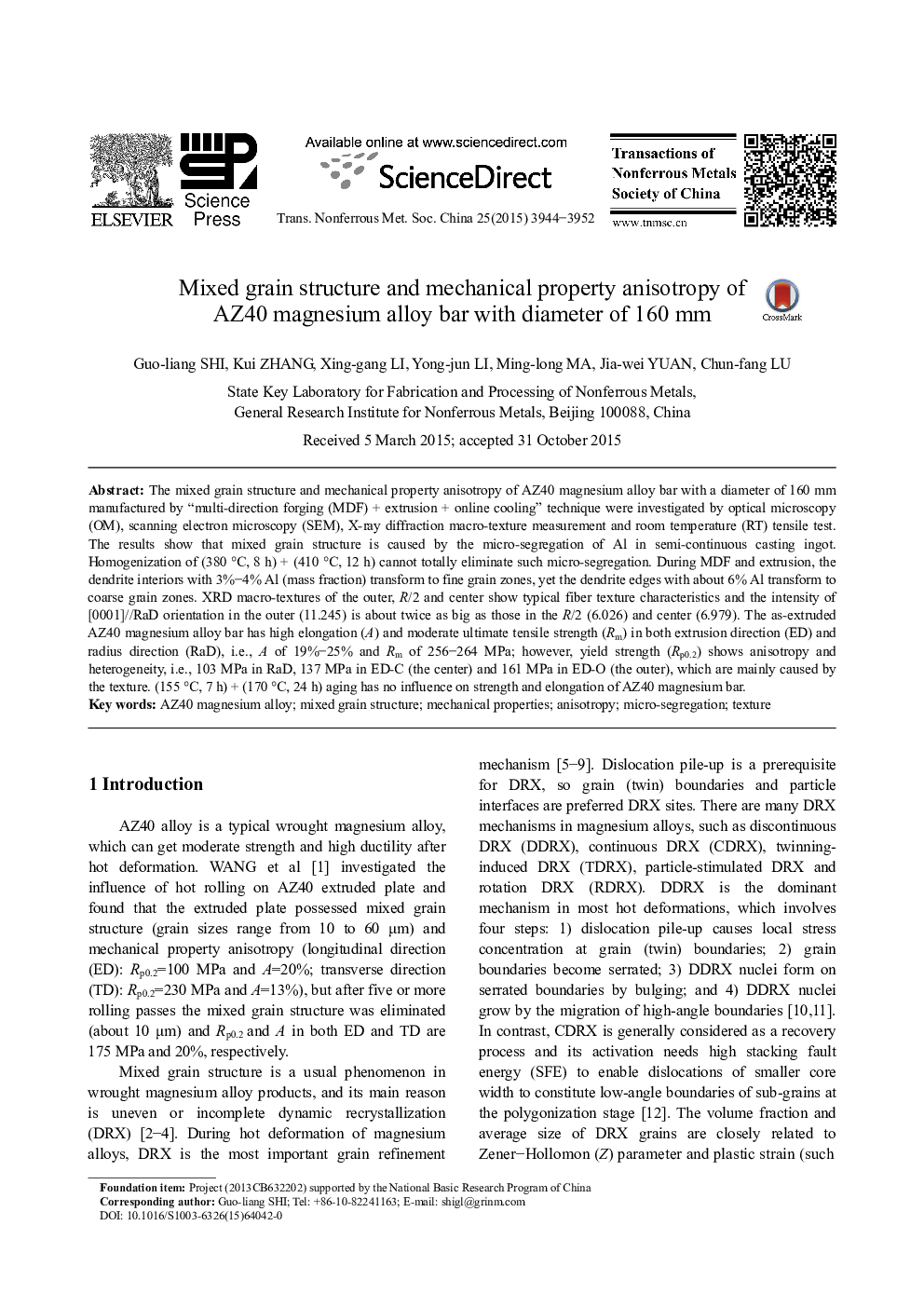| Article ID | Journal | Published Year | Pages | File Type |
|---|---|---|---|---|
| 1635780 | Transactions of Nonferrous Metals Society of China | 2015 | 9 Pages |
Abstract
The mixed grain structure and mechanical property anisotropy of AZ40 magnesium alloy bar with a diameter of 160 mm manufactured by “multi-direction forging (MDF) + extrusion + online cooling” technique were investigated by optical microscopy (OM), scanning electron microscopy (SEM), X-ray diffraction macro-texture measurement and room temperature (RT) tensile test. The results show that mixed grain structure is caused by the micro-segregation of Al in semi-continuous casting ingot. Homogenization of (380 °C, 8 h) + (410 °C, 12 h) cannot totally eliminate such micro-segregation. During MDF and extrusion, the dendrite interiors with 3%-4% Al (mass fraction) transform to fine grain zones, yet the dendrite edges with about 6% Al transform to coarse grain zones. XRD macro-textures of the outer, R/2 and center show typical fiber texture characteristics and the intensity of [0001]//RaD orientation in the outer (11.245) is about twice as big as those in the R/2 (6.026) and center (6.979). The as-extruded AZ40 magnesium alloy bar has high elongation (A) and moderate ultimate tensile strength (Rm) in both extrusion direction (ED) and radius direction (RaD), i.e., A of 19%-25% and Rm of 256-264 MPa; however, yield strength (Rp0.2) shows anisotropy and heterogeneity, i.e., 103 MPa in RaD, 137 MPa in ED-C (the center) and 161 MPa in ED-O (the outer), which are mainly caused by the texture. (155 °C, 7 h) + (170 °C, 24 h) aging has no influence on strength and elongation of AZ40 magnesium bar.
Related Topics
Physical Sciences and Engineering
Materials Science
Metals and Alloys
Authors
Guo-liang SHI, Kui ZHANG, Xing-gang LI, Yong-jun LI, Ming-long MA, Jia-wei YUAN, Chun-fang LU,
